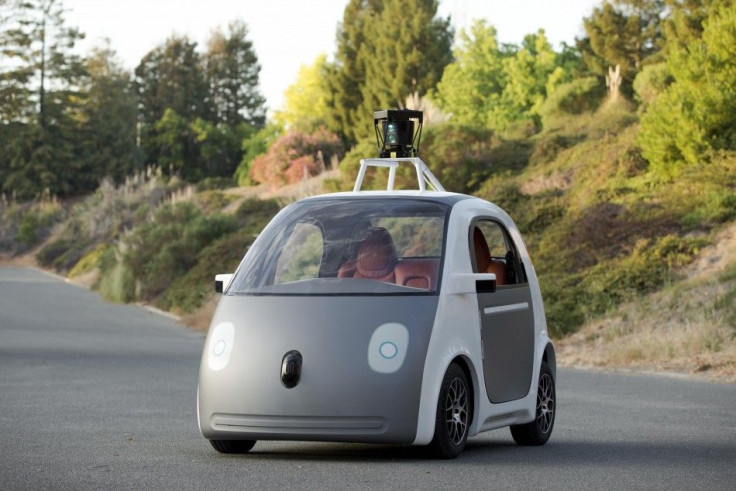Google's 'Self-Driving Car' Finally Revealed: Riding Experience Video Released [WATCH]

Google has recently released its "self-driving car" to some people and went for a test drive. After the initial release of the prototype car, the company will now start building its own self-driving cars, rather than modifying vehicles made by other manufacturers.
The car only has a stop and go button but no controls, steering wheel or pedals. It is the latest project from Google X, the company's advanced development programs arm led by Google's Co-founder Sergey Brin, according to The Verge.
Google's newest car sports a very "friendly" look, designed to make it more appealing for everyone. Brin revealed the plans at Recode's Code Conference in Southern California. He added while the car doesn't have a steering wheel, pedals or brakes, it has more sensors that give a safety benefit for the users than regular vehicles. The car is run by internal power steering, power brakes and a variety of on-board computers.
Google said its latest autonomous car is still in prototype phase. The company plans to build 100 early versions of the vehicles for more testing come mid-June. The self-driving cars intended for the early testing program will initially have manual controls for safety purposes. The manual controls are pluggable to the cars. When further tests prove the safety of the autonomous cars, the company will remove the controls entirely, Chris Urmson, director of the company's self-driving project, said.
The self-driving car has a seating capacity of two people, powered by electricity and only has a maximum speed of 25 mph (40 km/h) for safety during the early testing stages. The vehicle has soft foam-like bumper and flexible windscreen.
The vehicle's roof is equipped with laser and radar sensors and camera data drive to enable the car to "self-drive." The car will also use Google's road maps data that are specifically designed for its driving program.
Urmson said he looks forward to see the autonomous cars drive the streets next year. The company is currently managing the car's preparedness for the busy city streets.
How it Functions
The car can be brought to the user's location by using a smartphone. Inside the car, there is a small screen that displays the weather, current speed and animated countdown launch. The small screen also displays a reminder to take the user's personal belongings. The car combines sensors and software and highly accurate digital maps to locate its current location every time. A GPS system also navigates for the car's current rough location.
The software built into the vehicle can recognize objects, people, cars, road marking, signs and traffic lights so that it can obey road rules. It can also detect unpredictable hazards like cyclists, road works, and people, and safely navigate around them.
Driving at only 25 mph, which temporarily restricts the car to major driveways, the car's technology minimizes the impact should a crash ensue. The car also has seatbelts provided for its two-people seating capacity.
Google has input a considerate driving style data into the car so that it can protect passengers and other road users. Google is continually improving the car's natural and predictable way of driving so that it behaves normally on the driveways, making it safe for everyone.
CREDIT: Google Self-Driving Car Project/YouTube




















